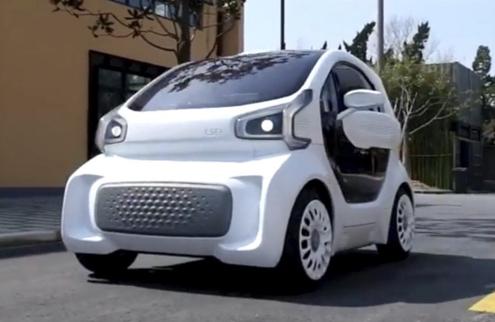
The 3D printed car has arrived
Once 3-D printing transitioned from fantasy to reality, it brought a whole raft of fantasies into reality with it. The rapid advancements in modern technology mean that you can’t afford to blink, or you’ll miss it. Not so long ago we were reporting on the 3-D printing of a gun, today we are telling you all about the 3-D printed car. Doubtless tomorrow we will be informing you about the first flight in a 3-D printed helicopter.
The first attempt at printing a 3D car
The reality of the 3-D printed car arrived in 2010 with the development of the URBEE, generated using a 3-D additive manufacturing process for the body. This was a hybrid car, but not as we know them seven years later – the hybrid engine could run on petrol or ethanol.
This car was a novelty but, compared to the 3-D printed cars being produced today, it was more of a Model T Ford of the 3-D car printing world.
Second generation
The next step was taken by Local Motors and their Strati 3-D printed car. This was the first car which had a minimum 75% printed parts. There has always been the conception that you could never have a car where all components were 3-D printed, after all, you need an engine, a battery, electric wiring, lights, etc. However, stop and think for one moment. It is not the capability of a printer that will stop this from happening, it is the properties of materials used that will decide whether or not 100% of all car components can be built.
The Strati embraces some of the key advantages of 3-D printing of car components, and that is the ability to create a structure that is sufficiently safe and rigid. Because a printer does not create panels, but structures, the use of composites such as carbon fibre, enable the printer to create a structural latticework concealed with a cover, enabling a minimum of material to be used to create maximum strength.
By 2019 Local Moors hopes that up to 95% of the components of their next car will be created by a 3-D printer, which takes us along another path – spare parts. With mass production of cars will come the need for readily available spare parts. However, have we now seen the end of interminable delays while our local garage has to wait for the delivery of a specific component because they haven’t got it in stock? Will it now be a case that whether working in a garage, or walking in off the street, if you need a new part, you simply wait five minutes for one to be ‘printed off’. Now that’s cool.
Fast forward to the future
So, talking of mass manufacturing, it’s now time to say “hello” to the new LSEV, the result of a joint venture between Polymaker, a Chinese company specialising in creating materials suitable to be used for 3-D printing, and Italy-based vehicle manufacturer X Electrical Vehicle (XEV). The LSEV comprises 90% 3-D printed components, and the revolutionary manufacturing process means that where today many cars will have an average 2,000 plastic parts, this 3-D printed car has only 57.
The LSEV took only 4 days to print and build, and it is anticipated that by 2019, the joint venture company will be annually rolling 500 of the LSEVs off the production line, or maybe that should be changed to print queue! Price is expected to be around £7,100 and the car will have a weight of only 450kg, a range of 93 miles from one electric charge, and a top speed of 43mph.
Here at the Entwistle Group, printing is our life, and though our principal field of expertise involves the 2-D print domain, we are now branching out into providing 3-D printing services, while we also sell a good range of affordable 3-D printers. We are not in the process of transitioning away from 2-D printing, but it is more a case of embracing all that is good about 3-D printing as well.
We have continually invested in state-of-the-art equipment to provide the very highest print quality and across a broad spectrum of products, from documents, leaflets, cards and brochures, through bidsets, to decals, wallpaper and banners and displays that are ideal for exhibition and trade show purposes. We will continue to do the same was the 3-D printing revolution gathers momentum.